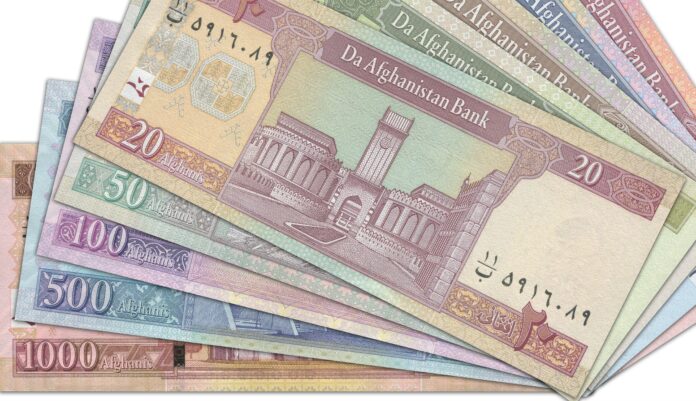Afghanistan’s national currency – the Afghani – is the world’s best performing currency this financial quarter, according to data compiled by Bloomberg.
The Afghani was trading at around 78.25 against the U.S. dollar on September 26. As per the quarterly data compiled by Bloomberg (a provider of financial news and information), the currency has climbed by 9%, outperforming the Colombian peso in second place which recorded a 3% gain during the same period.
On a yearly basis, the Afghani has climbed by 14%, making it the third strongest performer after Colombia and Sri Lanka’s currencies.
Analysts say the strengthening of the Afghani is due to a number of factors including currency controls imposed by the Islamic Emirate which has banned online trading, outlawed the use of dollars and Pakistani rupees for settling domestic transactions, and has renewed its efforts to bring dollars into the country.
The resurrection of the Afghani has also allowed the country’s Central Bank to ease limits on dollar withdrawals, raising it from $25,000 to $40,000 per month for businesses, and from $600 to $200 a week for individuals.
Overseas aid, despite the fact that much of it has been cut since the IEA assumed power in August 2021, has also amounted to the tune of billons of dollars, with the United Nations providing $5.8 billion in the form of aid and development.
Afghanistan is also likely to secure more inflow of foreign currency, as the Islamic Emirate seeks to use the country’s vast natural resources, including the reserves of Lithium, to mop up investments.
Subscribe to our newsletter and stay updated on the latest news and updates from around the Muslim world!
In May, the country was included under China’s Belt and Road Initiative which holds the potential of an increase in foreign investment to fund the country’s infrastructure projects.
This achievement comes despite the fact that Afghanistan remans largely isolated from the world financial system and remains one of the poorest countries in the world.
In January this year, the World Bank delivered an upbeat assessment of the Afghan economy in the first nine months of the fiscal year 2022, citing high exports, a stable exchange rate and strong revenue collection.
The World Bank assessment noted that inflationary pressure had eased since July of last year, decelerating by half to 9.1 % in November, while most basic food and non-food items remain widely available. The report attributed the decline in inflation to lower global oil and food prices, along with a stable exchange rate.
Afghanistan exported $1.7 billion worth of goods, an increase of approximately 90% compared to the full year 2021, the bank reported. Pakistan, with 65%, and India, with 20%, remain the two main export destinations for Afghan vegetable products, mineral products, and textiles.























